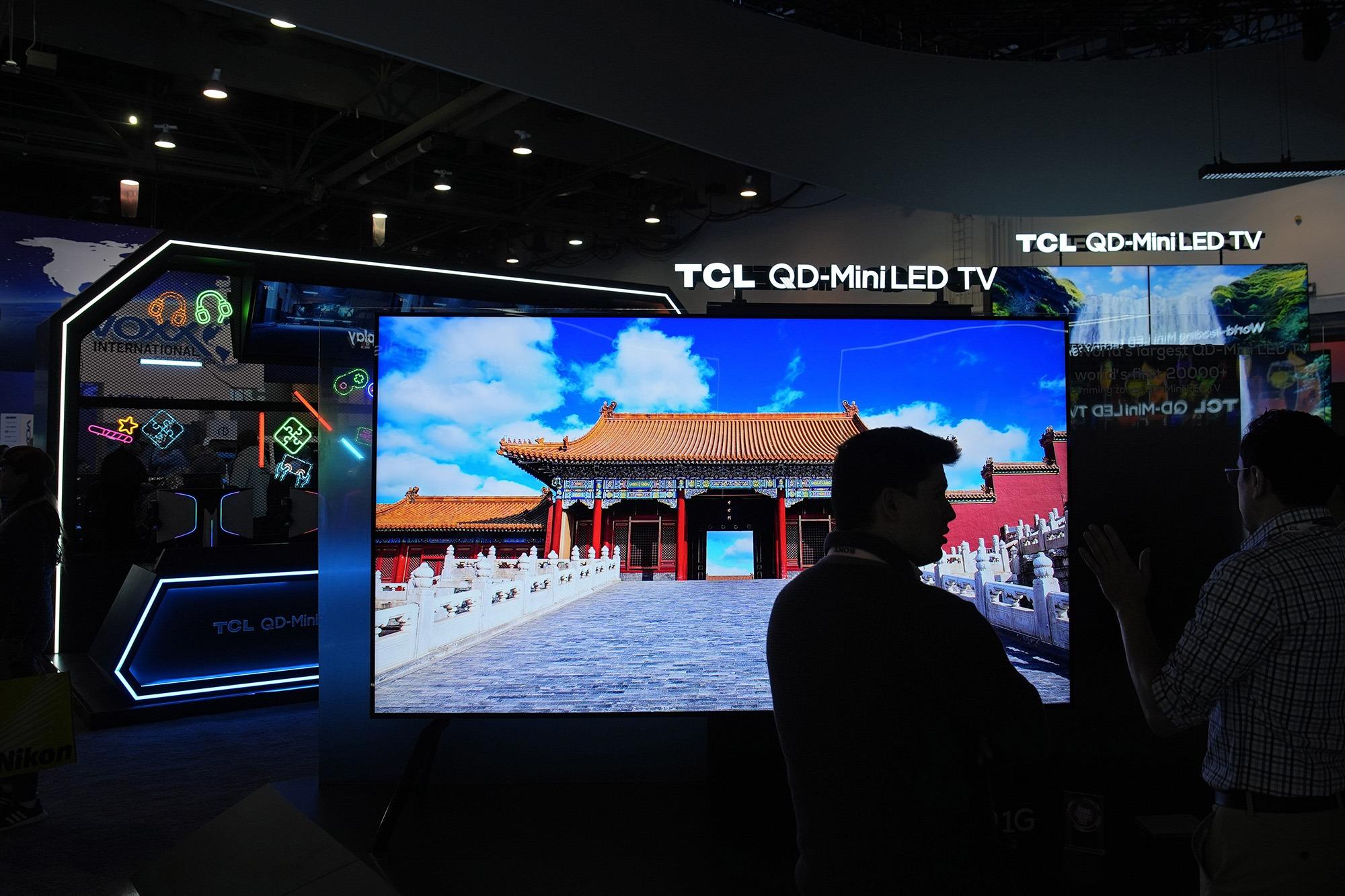 A TCL 115-inch QD-Mini LED TV is displayed in the TCL booth at the CES tech show in Las Vegas on Jan 9, 2024. (PHOTO / AP)
A TCL 115-inch QD-Mini LED TV is displayed in the TCL booth at the CES tech show in Las Vegas on Jan 9, 2024. (PHOTO / AP)
From a screen empowered with directional sound to a curved screen for immersive in-car experience and an expansive 110-inch screen, Chinese companies are leading the charge at CES 2024 with display technology innovation, showcasing advancements poised to reshape the global market.
BOE Technology, a leading Chinese display panel manufacturer, unveiled a slew of new products at the closely watched annual consumer electronics show in Las Vegas, Nevada. These include a transparent display panel, a screen capable of "sound focus on demand" and a large 8K cockpit screen, which the company said is the first of its kind in the world.
The 45-inch 8K borderless smart screen is equipped in Geely's new all-electric car Galaxy E8, which was launched for the CES and on display at the show.
"Its near-retina-level display with 8K resolution with 98 percent active area combines driver panel, central control and passenger panel into one," the company said.
Another innovation is a screen integrated with sound, which means only the person in front of the screen can hear the sound, while all other directions are in the "quiet zone" — a perfect fit for in-car application.
Envisioning screens embedded in diverse scenarios beyond traditional smartphones, the company also showcased flexible organic light-emitting diode, or OLED, displays capable of folding and rolling, highlighting their potential for smart homes, education and retail.
"In the future, wherever there is a scenario related to screens, it may become a business opportunity for BOE," Si Da, vice-president and chief brand officer of BOE, told China Daily.
The global display market size was estimated at $157.8 billion in 2022 and is expected to be worth around $314.78 billion by 2032, according to a report by Precedence Research in Ottawa.
"If a company is not market-oriented and globalized, it will be difficult to move forward," Si said, adding that overseas revenue has exceeded 50 percent of the total.
Hisense, a top brand in China, is setting its sights on global leadership with two CES 2024 Innovation Award-winning products.
The 110UX Mini LED TV features a more vivid color palette than other leading displays, while the Automobile Laser Display provides higher color performance than LEDs and is 80 percent smaller than traditional products, thus enhancing in-vehicle experience, Hisense said.
"In North America, consumers are very much focused on picture quality," David Gold, president of Hisense USA, told China Daily. "This is the most important aspect of the TV, and then the size and the price. So, our strategy has always been delivering the most innovative and the largest TV possible, but offering value compared to some of the legacy brands.
"So this formula — innovation, larger size and value — has been very attractive to local consumers."
Hisense is now the fastest-growing TV brand in the region by dollar value and has climbed to the third spot in Canada and Mexico, with its sights set on being in the top five in the US, said Gold, calling the growth "incredible".
When TCL first participated in CES many years ago, its Chairman Tomson Li recalled it had only a small booth covering 9 square meters. This year, their booth covers a space of 1,700 sq m.
The Chinese consumer electronics giant showcased what they called "the world's largest mini LED TV", measuring 115 inches, at CES. This "bigger and better" strategy has paid off, propelling the company to the top 10 best-selling TV brands in the US, Li said.
In the first three quarters of last year, TCL smart TV shipments in North America saw an 11.4 percent rise year-on-year, driven by strong demand for large-size models. Shipments of large-size TV products have continued to rise, with shipments of products 75 inch and over increasing by 144.8 percent year-on-year.
The Chinese brands also demonstrated their commitment to globalization and low carbon at the show.
Si said BOE has been promoting oxide panel technology in recent years, which leads to low power consumption.


